Jakarta attacks: What we know
- Published

Police commandos flooded the area after the attacks began
A series of explosions and gun attacks rocked the Indonesian capital, Jakarta, on 14 January, leaving eight people dead, including the four attackers.
Here's a summary of what we know so far.
How did the attacks unfold?
The Jakarta attacks began at about 10:40 local time (03:40 GMT) with a series of bomb blasts at an intersection near the Sarinah shopping mall and a Starbucks coffee shop.
Reports say that there were at least six explosions in fairly quick succession.
The first blast took place outside the Starbucks cafe, which had its windows blown out.
As people inside ran out, two gunmen waiting outside opened fire.
At least two militants also attacked the police box in the centre of the intersection in a suicide bomb attack.
Armed police quickly sealed off the area and moved in on the attackers, initially using cars and later armoured vehicles as cover.
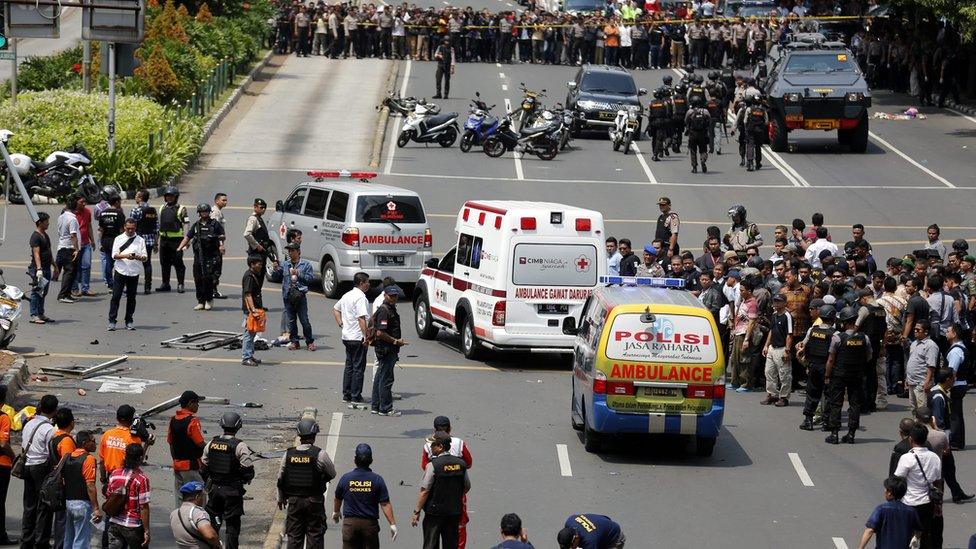
The attack happened at a busy intersection
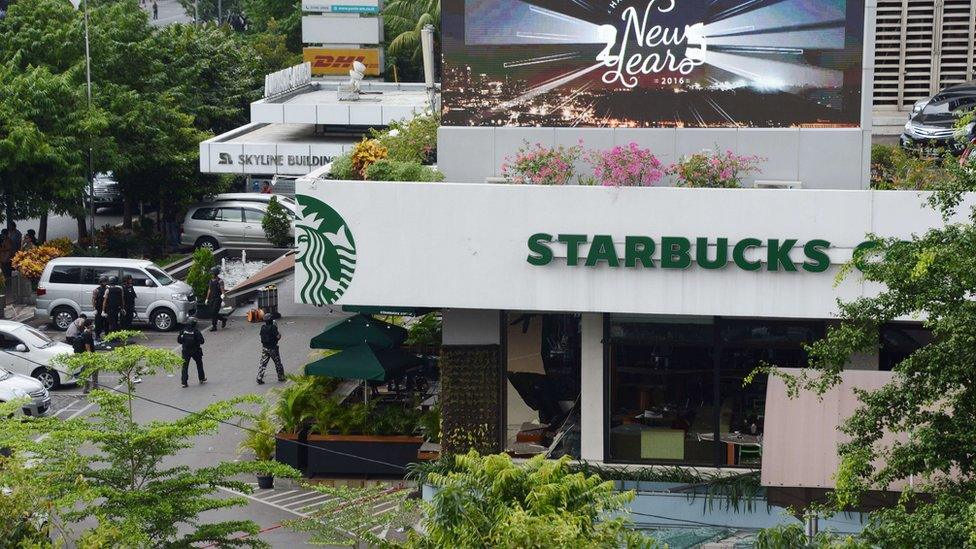
One of the targets was this Starbucks
Gunmen in the area continued firing at bystanders and police, with sporadic gunfire reported for several hours afterwards.
During a shootout, militants took cover in the Djakarta Theatre cinema, in the same building as Starbucks. Police say two attackers were killed in front of the cinema.
Reports said gunfire and explosions were also heard elsewhere in Jakarta, but it is not clear where those took place.
Who carried out the attacks?

Suicide bombers targeted this police box
The Islamic State (IS) group said it had carried out the attacks, in an online statement that could not be independently verified.
Indonesian police said they believed Bahru Naim, an Indonesian currently thought to be in Syria had masterminded the attack and been "planning this for a while".
Police chief Tito Karnavian told local media Bahrun Naim wanted to be IS's leader in the region.
"All leaders [of IS] in South-East Asia are competing to be the chief. That's why Bahrun Naim plotted this attack," he said.
Meanwhile, national police spokesman Maj Gen Anton Charilyan said the militants had imitated the recent Paris attacks.
However, security experts say the gunmen appeared to be inexperienced, with little training.
How many attackers were there?
Police initially warned there could be as many as 14 attackers before bringing that number down to five.
However, one of the five was later found to be a 43-year-old civilian working as a courier.
IS put the number of militants at four.
How many civilian casualties were there?
Two civilians, a Canadian and an Indonesian, died in the attack on Starbucks.
A wounded Indonesian bank employee later died of his injuries and the death of the civilian courier brings the total number of civilians killed to four.
Police also said 20 people were wounded in the attacks, among them at least five police officers and an Algerian, who police said escaped from the Starbucks.
The Dutch embassy said one of its nationals had been seriously hurt and was being treated in hospital.
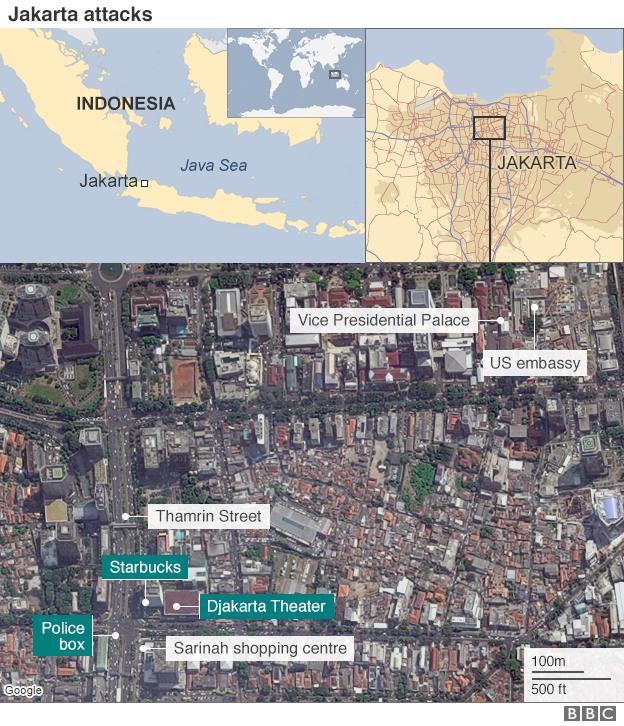
Where did the main attacks take place?
The militants targeted a busy area in central Jakarta - correspondents say the attack appeared to be designed to inflict maximum damage.
The Sarinah department store is one of the first department stores in Jakarta and a popular place for Indonesians and foreigners alike.
It is on the same intersection as Starbucks and the police box.
Nearby is a UN office, the Pan-Pacific Hotel, some Indonesian government offices and many shops and restaurants.
The US embassy, near Sarinah, has warned its citizens to stay away from the area.
The Istana Negara presidential palace is about 2km (1.24 miles) away, near the US embassy.
- Published14 January 2016
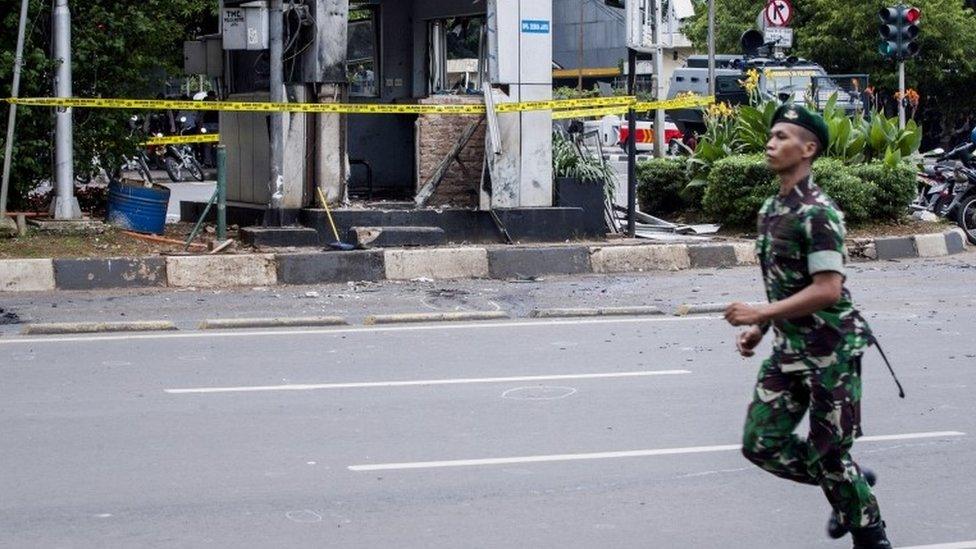
- Published14 January 2016

- Published14 January 2016
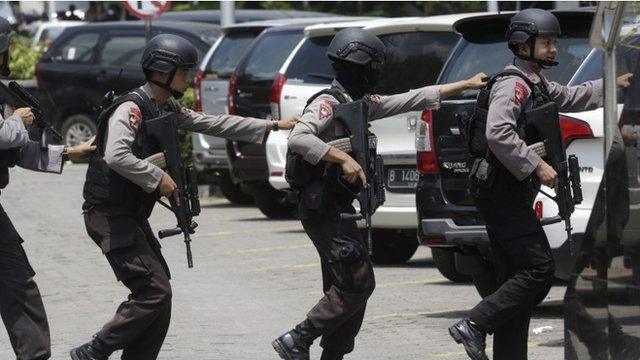
- Published14 January 2016
